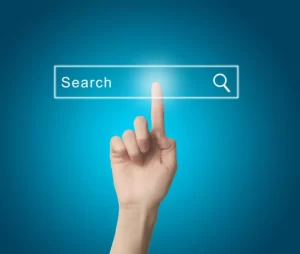Welcome to our comprehensive guide on adding a favicon to your WordPress website.
As a website owner, you might have noticed those small icons that appear next to the website title in your browser’s tab.
These tiny icons, known as favicons, play a crucial role in website branding and user experience.
In this blog, we’ll explain what favicons are, and their significance, and provide you with a step-by-step tutorial on how to add a favicon to your WordPress site effortlessly.
What is a Favicon?
A favicon, short for “favorite icon,” is a small, iconic image that represents your website. It appears in the browser’s address bar, next to the site title in bookmarks, and as a tab icon.
Favicons enhance brand recognition and create a more polished look for your website. Over the years, they have evolved from simple 16×16 pixel icons to more intricate and high-resolution designs.
To inspire your favicon creation, consider checking out some well-designed favicons from popular websites.
Step-by-Step: How to Add a Favicon in WordPress?
Before diving into the WordPress setup, you need to prepare your favicon image.
The recommended favicon dimensions are 16×16 pixels or 32×32 pixels. Ensure that your favicon is saved in a suitable format such as .png or .jpg.
For simplicity and broader compatibility, we suggest opting for the .png format. There are numerous online tools and graphic software available to create or convert your favicon to the correct dimensions and format.
1. How to Upload Your Favicon to WordPress
To add your favicon to WordPress, first, log in to your WordPress admin dashboard. Once you’re in, navigate to the “Appearance” tab on the left-hand side menu. Then, click on “Customize” to access the WordPress Customizer.
2. Add the Favicon in the Theme Customizer
In the WordPress Customizer, you will see various options to customize your site. Look for the “Site Identity” or “Site Icon” section, which is where you can add your favicon.
Click on the “Select Image” button to upload the prepared favicon image from your computer.
3. Adjust and Crop the Favicon
After uploading the image, you might need to crop or adjust it to fit the recommended dimensions. The WordPress Customizer will provide you with a cropping tool if necessary.
Make sure the essential elements of your favicon are centered and visible within the crop area.
4. Publish the Changes
After adding your desired favicon, hit the publish button and save the changes.
Preview Your Favicon
Once your favicon is added, it’s essential to check its appearance across various web browsers like Google Chrome, Mozilla Firefox, Safari, and Microsoft Edge.
Open your website in different browsers and devices to ensure the favicon displays correctly and maintains its clarity.
Alternative Methods to Add a Favicon in WordPress
While using the WordPress Customizer is the most common way to add a favicon, some themes offer alternative methods.
Some themes have their own options panel where you can upload the favicon directly.
Additionally, if you have a good understanding of WordPress theme development, you can manually add the favicon by accessing the theme’s editor and modifying the header.php file.
What to Do If Favicon is Not Showing?
If you encounter any problems with the favicon display or upload, there are a few steps you can take to troubleshoot.
First, clear your browser cache to ensure you’re viewing the updated favicon.
If the issue persists, double-check the favicon dimensions and file format to ensure compatibility.
How to Select the Best Favicon for Your Website?
When designing your favicon, remember to keep it simple and recognizable. Since it’s a small icon, intricate details may not be visible.
Stick to your brand colors and use a transparent background to blend seamlessly with different themes.
Furthermore, avoid using copyrighted images to prevent legal issues down the road.
Conclusion
It is not a big task to add a favicon to your WordPress site. Following this step-by-step guide you can easily upload the favicon on your website.
Favicons may be small, but their impact on your website’s identity is substantial.
Visitors can easily recognize and remember your website, creating a more engaging online presence.





